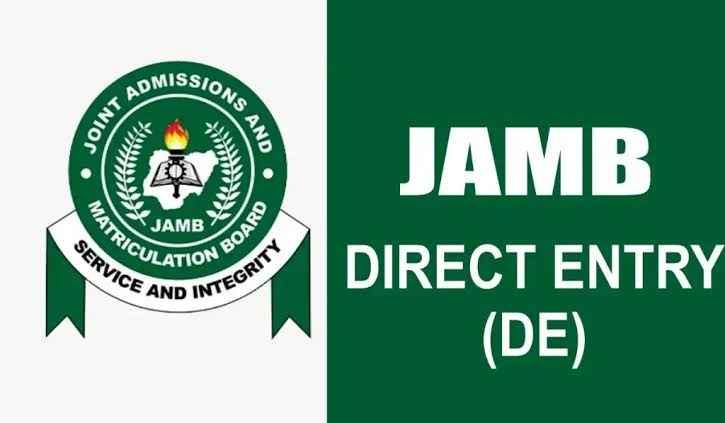Jamb Vs Direct Entry: Which Admission Path Is Better For Nigerian Students?
When it comes to gaining admission into Nigerian universities, two major routes are available for students: the Joint Admissions and Matriculation Board (JAMB) and Direct Entry (DE). Both admission paths serve as legitimate doors into tertiary institutions, but they are not the same in structure, requirements, or benefits. Over the years, students, parents, and even education stakeholders have often debated which is better.
In this blog post, we’ll dive into the JAMB vs Direct Entry conversation with an open mind. Whether you’re fresh out of secondary school, a polytechnic or NCE graduate, or simply trying to decide your best admission route, this post is here to guide you with facts, comparisons, and insights.
What is JAMB?
JAMB, short for Joint Admissions and Matriculation Board, is Nigeria’s central body responsible for conducting entrance examinations for prospective undergraduates into tertiary institutions. This body oversees the Unified Tertiary Matriculation Examination (UTME) – the most popular admission route in the country.
Each year, millions of students register for the UTME with the hope of securing a spot in one of Nigeria’s universities, polytechnics, or colleges of education.
Key Features of JAMB:
-
Meant for students coming directly from secondary school (SSCE holders)
-
Applicants must have at least 5 credits in their O’Level results including English and Mathematics
-
Candidates take a computer-based exam in four subjects
-
Admission is typically into 100 level
-
Highly competitive, especially for popular courses
What is Direct Entry?
Direct Entry (DE) is a different route into the university, also managed by JAMB, but it’s not for fresh secondary school graduates. This route is specially designed for students who already possess higher qualifications like:
-
National Diploma (ND)
-
Nigeria Certificate in Education (NCE)
-
Higher National Diploma (HND)
-
Advanced Level (A’Levels)
-
IJMB, JUPEB, or similar qualifications
-
Direct Entry candidates are usually admitted into 200 level, skipping the first year of university.
Key Features of Direct Entry:
-
Requires post-secondary school qualifications (e.g., ND, NCE, A’Level, IJMB)
-
O’Level credits including English and Mathematics are still required
-
No UTME exam is written (though some universities may conduct aptitude tests or screening)
-
Admission is into 200 level
-
Ideal for those who have gone through a diploma or equivalent program
JAMB vs Direct Entry: The Head-to-Head Breakdown
To truly understand which route is better, let’s compare both options using key factors that matter to most students.
1. Entry Requirements
JAMB:
-
Minimum of 5 O’Level credits (WASSCE, NECO, NABTEB)
-
Must sit for and pass the UTME
-
Subject combination must align with your desired course
Direct Entry:
-
5 O’Level credits (same as JAMB)
-
Plus: ND, NCE, HND, IJMB, JUPEB or A’Levels
-
No UTME, but DE form must be purchased
-
May face internal screening or test depending on the institution
Verdict: Direct Entry has more academic requirements upfront, but you skip the dreaded UTME exam.
2. Admission Level
JAMB:
-
Admitted into 100 level
Direct Entry:
-
Admitted into 200 level (2nd year)
Verdict: Direct Entry gives you a head start academically and reduces your total time in the university—at least in theory.
3. Time Spent Before University
JAMB:
-
Straight from secondary school
-
Ideal if you want to get into university as early as possible
Direct Entry:
-
You must first complete a diploma, NCE, IJMB, or JUPEB program (usually 1–2 years)
Verdict: JAMB is faster for starting university, but DE can be more strategic long-term.
4. Duration of University Education
JAMB:
-
Full program duration (e.g., 4 years for a typical degree)
Direct Entry:
-
Starts from 200 level, saving about one academic year
-
Note: Some universities still make DE students take 100-level courses or delay graduation due to logistics or accreditation.
Verdict: DE is meant to shorten university years, but execution depends on the institution.
5. Competitiveness and Admission Chances
JAMB:
-
Extremely competitive (over 1.7 million candidates yearly)
-
Admission depends heavily on UTME score, post-UTME, and quota
Direct Entry:
-
Fewer applicants compared to JAMB
-
DE candidates often compete with fewer people for the same courses
However, some universities prioritize UTME candidates for certain courses
Verdict: Direct Entry may offer better chances, but availability of space is still key.
6. Academic Preparedness
JAMB:
-
Many students come directly from secondary school with limited exposure to higher-level academic work
Direct Entry:
-
DE students have already undergone post-secondary training, often making them better equipped academically for university rigors
Verdict: DE students often come with more maturity and academic readiness.
7. Flexibility and Options
JAMB:
-
Only one route: UTME > Post-UTME > Admission
Direct Entry:
-
Several options: JUPEB, IJMB, NCE, ND, HND, even degrees from other universities
-
DE students can switch disciplines or upgrade qualifications
Verdict: DE offers more flexibility for switching paths and broadening academic horizons.
Which Path is Better?
Now to the big question—which path is better?
The honest answer is: it depends on your individual situation.
Let’s break it down by common scenarios:
You Just Finished Secondary School?
Then JAMB is your go-to option. It gets you into the university faster. But make sure you prepare well for the UTME, because competition is high and schools have strict cutoffs.
You Didn’t Score Well in JAMB?
Rather than waiting a full year to try again, consider taking a JUPEB or IJMB program and use Direct Entry the following year. It’s a smart backup.
You Have an ND or NCE Already?
Direct Entry is ideal for you. Why go back to 100 level when you can continue from 200 level and save time?
You Want to Study a Competitive Course?
If you’re targeting courses like Medicine, Law, or Engineering, know that some universities give more priority to UTME candidates. But DE is still a solid route—just ensure your transcript and grades are solid.
You’re Looking for the Least Stressful Route?
Let’s face it—UTME can be a headache. If you’re willing to spend extra time doing IJMB, ND, or NCE first, Direct Entry helps you dodge JAMB stress altogether.
Pros and Cons at a Glance
JAMB Pros:
-
Fastest entry into university
-
Ideal for fresh secondary school leavers
-
Well-known and widely accepted
JAMB Cons:
-
Highly competitive
-
UTME can be tough
-
Long academic journey (starts from 100 level)
Direct Entry Pros:
-
Skips 100 level (saves time)
-
Less competitive in most cases
-
Offers flexibility (many qualifications accepted)
-
DE students often cope better academically
Direct Entry Cons:
-
Requires prior academic qualifications
-
Some universities may not treat DE students equally
-
Skipping 100 level may affect course foundation
Tips for Making the Right Choice
1. Know Yourself: Are you academically ready for UTME? Can you handle a diploma program instead?
2. Research Your Desired Course: Some universities don’t accept DE into Medicine or Law. Check JAMB brochures or your university of choice.
3. Weigh the Time Factor: JAMB gets you into school faster; DE saves you time inside the university.
4. Be Strategic: If you failed JAMB twice, consider switching to a diploma or IJMB instead of staying idle.
5. Backup Plan is Key: You can write JAMB while also preparing for IJMB or JUPEB. Whichever works out first wins.
Final Thoughts
JAMB and Direct Entry are not enemies—they are just two different roads leading to the same destination: a university degree. The "better" option is not about which is easier or shorter, but which one suits your goals, circumstances, and strengths.
If you're a young, fresh secondary school graduate with no delays, JAMB is the best route for you. But if you’ve gathered post-secondary education experience, or you want to avoid the JAMB bottleneck, Direct Entry is your shortcut to the finish line.
In the end, the Nigerian education system may have its challenges, but with the right information and strategy, you can successfully navigate it—regardless of the path you take.



